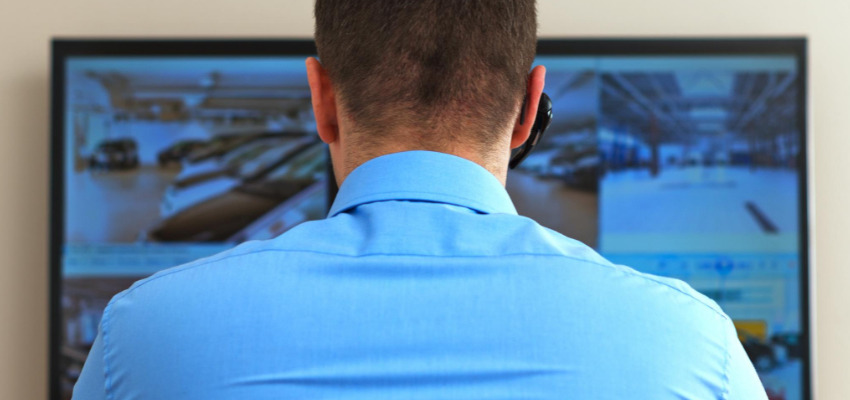Show:
Employee Wellness Programs: The Future of Employee Productivity in the Digital Era
Businesses can often overlook Employee Wellness, however, research shows maintaining positive employee wellness levels is pivotal to increasing productivity and reducing absenteeism. In fact, studies show that wellness programs can reduce lost work days by 80%, and save up to millions of dollars depending on the company size.

How do businesses go about these programs? Traditional wellness activities such as gym memberships or the occasional health seminar are no longer seen as sufficient, and companies are increasingly opting for the latest technologies to give their employees the boost they need.
From office smart technologies to wearable health accessories, this article explores the top ways businesses are looking to increase employee wellness and the hard truth of these programs.
Smart Office Equipment
As technology continues to evolve, companies are leveraging advancements to support the needs of employees. One big contributor to an employee’s mental well-being is the environment, keeping an office space light and fresh is essential to employee wellness over the long run.
Using technology to monitor and change light levels to dim or brighten office spaces, CO2 levels to keep air quality at a healthy level, and noise levels so as not to create disruptions in the work environment can all be massively simple yet effective changes to a workspace.
Another pressing issue that companies want to tackle with smart technology is the problem of contagious illnesses, which can be mitigated through indoor positioning technology. Indoor positioning technology allows a network of devices to detect the location of people and objects whereby an ordinary GPS may fail, enabling businesses to pinpoint the exposure of serious viruses like COVID-19. This new tech allows businesses to reduce sickness and therefore absenteeism, while simultaneously protecting the well-being of their employees.
Advancements in smart tech are not just used in serious matters to improve wellbeing. Improvements in entertainment, such as smart televisions, give employees a wide range of interesting games to play on tv when they want to take a step back from their work. Smart televisions can also be used to improve team relations, with activities such as interactive yoga sessions, mindfulness-based apps, and fitness games displayed on TVs to encourage group camaraderie whilst also promoting healthy lifestyles.
Health Accessories
The next level of wellness programs is surely easily demonstrated with the advancement in wearable health accessories. The explosive popularity in watches like Fitbit, which are able to monitor your exercise progress in real-time, as well as set goals and reminders, is a trend that companies are eager to jump on.
These monitoring accessories are also able to set challenges for individuals, such as setting records with step-counters, allowing businesses to create fun competitions that encourage healthier living and improve wellbeing.

Virtual Wellness Programs for Remote Work
Shifts in work culture have given many employees the opportunity to work from home. This is a great way for employees to have a stronger, more fulfilled work-life balance, however, it is important to implement these changes sensibly. Employees may struggle more with loneliness and isolation given that there is less time interacting with peers when working remotely.
Virtual wellness programs are a great way to make up for sociability that remote work may lack. Virtual coffee talks and wellness workshops allow employees to express their feelings and re-emphasize the importance of wellbeing, especially when working remotely.
Challenges of New Technologies
Although these technologies can be highly beneficial for both employees and employers, there are a range of concerns that come with the new territory. One of the major considerations is employee privacy. Employers will need to ensure any data on employee health is protected securely and confidentially, and any tracking (such as the indoor positioning technology previously discussed) will have to be carefully thought out in a way that reassures the privacy and full consent of all employees.
Employers should also be mindful of the goals being set out. One study into wellness programs found employee engagement to be crucial in seeing program benefits, additionally, there is heaps of evidence showing poorly implemented wellness programs to be extremely costly to organizations.
It is in an employer’s best interests to create a manageable program with straight-forward goals, in order to not overwhelm employees. For example, there is a term called ‘gymtimidation’, whereby employers give in to requests for highly sought gym access, yet employees do not reap the rewards as they may not know how to get started.
An important lesson for employers to take away when implementing wellness programs is that the programs will never be able to substitute for the reduction of stressed workload. The priority to ensure a healthy workforce is a positive work-life balance, and wellness programs are an addition to this balance, not a substitution.
Employees will struggle to engage in wellness programs if they are struggling with their core workload, and rightly so. Both employers and employees will mutually benefit only if the program is considered in implementation, else employers will realize they are losing in health, time, and money.

 Return to Previous Page
Return to Previous Page








